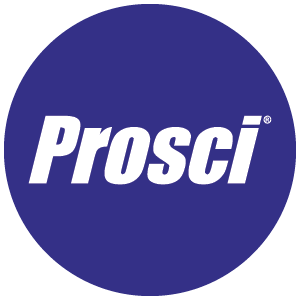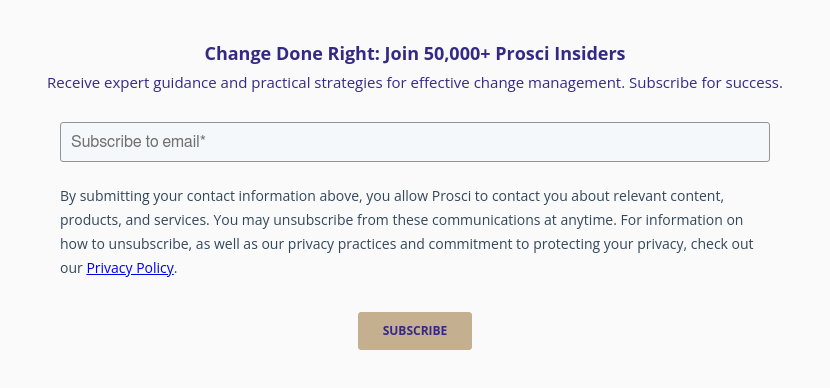Free Project Plan Template for Managing Change Effectively

8 Mins
Published: May 12, 2025

Without clear planning and defined goals, projects can quickly spiral out of control. Deadlines slip, resources are wasted, and teams get frustrated.
A structured project plan can be the difference between success and failure. It aligns project team members, ensures efficient resource allocation, and proactively manages project risk. But beyond execution, a strong project plan also lays the groundwork for effective change management by clarifying expectations, minimizing uncertainty, and increasing engagement.
A clear, step-by-step roadmap can help boost commitment, prevent resistance, and keep momentum moving in the right direction.
This article shows you how to create an effective project plan to overcome common barriers and set your initiative up for success. By the end, you’ll have the tools to drive your projects forward with confidence—and a roadmap that supports both delivery and change adoption.
You’ll also have access to a free and customizable project plan template to get started on the right foot.
Free Project Plan Template: Download Here
A simple project plan template is a structured document that outlines all key components needed to execute a project from start to finish. It acts as a roadmap for project teams to stay aligned on goals, tasks, timelines, budgets and responsibilities.
Use this template to ensure your projects stay on track, on time and within budget.
How to Use the Project Plan Template for Different Types of Projects
This template is designed to be flexible, making it easy to adapt for projects of all sizes and styles. Here’s how you can tailor it based on your needs:
Larger, complex projects
Expand the template by adding extra sections as needed. For example, adding more milestones, dependencies, and so on. You can also break down the project into smaller phases to capture all the moving parts and create subtasks to ensure nothing gets overlooked.
The more detailed the plan, the easier it is to manage progress and communicate clearly.
Marketing projects
Customize the template to align with key marketing activities. For example, in the “Project Overview” section, outline marketing campaign elements like your ideal target audience, content themes, and preferred social media channels.
You can also include approval stages, creative assets and performance checkpoints to keep everything on-brand and on track.
Agile projects
Adapt the template structure to reflect Agile workflows. For example, you might change the “Timeline and Milestones” section to “Sprints.” You could also add a new section for product backlog items.
Make sure to leave space for retrospective notes and iteration plans.

The Importance of Structured Planning in Project Management
Structured planning creates alignment, reduces confusion, and ensures efficient use of resources—all critical to project success. Without a solid plan, projects are more likely to face delays, budget issues, and ultimately fail to deliver the desired outcomes.
Here are some of the other reasons structure is essential in project planning:
- Create project goals and objectives easily – Structured planning helps define the entire project’s scope and purpose, making it easier to clarify goals and work towards the same objectives. Without clearly defined goals, teams may work toward different outcomes, leading to confusion, wasted effort, and conflicting priorities.
- Increase employee support and motivation – Employees may resist change when they don’t understand how it benefits them or if they feel left out of the process. Project planning helps by providing clear expectations about roles and responsibilities. When employees understand the roadmap and their role in it, they feel more engaged and motivated.
- Improve resource allocation – Poor resource planning often leads to overworked employees, budget overruns, and delays. Project planning helps identify the required resources (budget, tools, personnel) and prevents last-minute scrambles for missing resources.
- Mitigate potential risks – Every project carries risks—technical failures, budget overruns, and so on. Without proactive planning, these problems can spiral into major setbacks. An effective project plan includes risk assessments that identify potential challenges and help project leaders create contingency plans for different risk scenarios.
A clear plan guides execution, builds confidence, and helps teams adapt when challenges occur.
How Change Management Plays a Critical Role in Project Planning
When change management is part of the project plan from day one, organizations don’t just deliver solutions—they achieve outcomes that stick. Focusing on the people side of change ensures employees are informed, prepared and supported throughout the transition. This boosts adoption and helps prevent resistance.
Here are some of the ways change management strengthens project planning—and why integrating both is essential for lasting success.
Combine the technical aspect with the people side of change
At its core, every project has two sides:
- The technical side – designing and delivering the project.
- The people side – preparing, equipping and supporting people to adopt the change.
Aligning people and processes turns project outputs into real business outcomes. Incorporating the people side of change in project planning helps you address employee concerns, readiness, and engagement from the start—ensuring that the project is a success.
Prosci Unified Value Proposition

For example, launching a new CRM system isn’t just about installing software—it’s about getting sales teams to use it.
A strong project plan should cover the key deliverables and timelines as well as change milestones—like who should send employee communications and when to host training sessions on the new system. It’s about giving equal weight to system deployment and human behavior.
Prosci stands at the forefront of change management, bridging the gap between project management and change management to drive business results. The Prosci Methodology integrates the technical aspects of project management with the essential elements of change, ensuring that organizations effectively prepare, support and equip their people to adopt new solutions.

The Prosci ADKAR® Model, for example, emphasizes that successful organizational change is rooted in individual change. This model equips leaders with strategies and tools to effectively manage change while providing people with the awareness, desire, knowledge, ability and reinforcement necessary to successfully navigate and sustain organizational changes.
Drive smoother transitions
Effective change management provides people with the information and skills they need to implement change effectively. That means building in communications strategies, coaching plans for managers, and feedback loops that help you pivot when things aren’t landing. In doing so, transitions become smoother and adoption happens faster.
Say you're rolling out a new process for remote onboarding. A project plan that includes communication check-ins, onboarding coaches, and early feedback sessions will help identify issues early and build trust faster, reducing confusion, downtime and resistance.
Develop team alignment and ownership
When responsibilities are defined in the project plan, everyone knows who’s doing what, how messaging will flow, and where to go for support. That clarity turns passive observers into active drivers of change.
For instance, assigning a Change Lead within the project team—someone responsible for employee engagement, feedback and support—ensures that employees know what’s expected of them during the project.
The Change Lead provides clear guidance on new processes or tools, communicates project timelines, and anticipates potential challenges by actively seeking feedback. They also help address concerns early, offer support during the transition, and ensure that employees have the necessary resources to succeed.
By acting as a bridge between the project team and the broader workforce, the Change Lead helps to create alignment and builds a sense of ownership and commitment among employees, ultimately ensuring that the project is accepted and supported by those it impacts.
How to Integrate Change Management With Project Planning
Integrating change management with project planning ensures that both the technical aspects and the people side of the project are aligned and supported. Prosci benchmarking research shows that 47% of participants who integrated project management and change management met or exceeded project objectives—17% more than those who didn’t.
Impact of Integration on Meeting Objectives
 But how exactly do you integrate change management throughout the project planning process? Let’s take a look.
But how exactly do you integrate change management throughout the project planning process? Let’s take a look.
1. Add change management to the project plan
Research shows that only 47% of organizations offer support for training on new ways of working. Despite this, the companies that have an employee dedicated to training people on new ways of working achieve project performance rates of 76.6%.
Treat change management as an essential component of the overall project strategy. The change management plan should be integrated with the project plan, so all key components align.
Imagine that you’re launching a new enterprise software system. For this project, your project plan should include the technical milestones for development and testing, but also a clear timeline for communication strategies, feedback surveys, training sessions, and reinforcement activities.
By embedding change management into the planning process, you ensure that organizational change is aligned with the technical rollout and that impacted people are well-prepared to embrace the new solution.
2. Work collaboratively with the project team
Throughout the project lifecycle, successful integration requires ongoing collaboration between project managers and change practitioners. By working together, both teams can align tangible project deliverables with key people-side milestones.
For example, if a project manager schedules a go-live date for a new product or system, the change management team can ensure that training sessions and communication efforts align with that timeline.
This coordination helps reduce confusion, builds readiness among impacted employees, and ensures that support structures—like help desks or coaching—are in place when needed.
3. Develop a change management strategy
A change management strategy is a structured approach that outlines how to guide individuals and teams through organizational change effectively. Alongside a project plan, a change strategy ensures that employees are informed, engaged, and supported throughout the transition.
The goal of this strategy is to ensure that all necessary resources are in place to support the adoption of the new solution and that potential resistance points are addressed early in the process.
Creating a change management strategy includes:
- Assessing the organization’s change readiness – Understanding how prepared employees are for the change, allowing you to tailor support and identify potential resistance early.
- Identifying key sponsors – Engaging influential leaders who can advocate for the change and motivate others to increase credibility and drive momentum.
- Selecting the right change management approach – Choosing the best mix of communications, training, coaching and reinforcement activities to make sure your efforts align with your organization’s culture, goals and capacity for change.
The Prosci Methodology can help you shape your change management strategy. The structured, research-based models in the Prosci Methodology help you identify key roles, track progress, and align change activities with each project phase.
For example, use our ADKAR Model to map each stage to project milestones. As the project progresses, you can schedule change activities—like communication, training and support—to build awareness early, develop the necessary skills, and reinforce new behaviors after implementation.
Prosci ADKAR Model

Studies also show that an evidence-based approach makes change more manageable and successful.
Prosci's change management models are based on more than two decades of expert research. Every framework is grounded in real-world data, giving you a reliable, proven foundation to guide individuals and teams through change.
4. Define change success and impact
Project success isn’t just about delivery—it’s about adoption and usage. To get the full value of any initiative, both the technical solution and the people using it must be set up for success from the start of the initiative.
Say that you’re rolling out a new customer relationship management system. System functionality might indicate project success, but how quickly and effectively employees begin using it is a measure of change success.
If you implement a new system effectively but people don’t use it, is it really successful?
Defining what success looks like from both technical and people perspectives also ensures that everyone is working toward the same goals, understands their role in achieving them, and can measure progress meaningfully.
5. Activate sustainment
Project closure doesn’t mean the change is complete. Sustainment is crucial for ensuring that the benefits of the change are fully realized and long-lasting.
For example, after the launch of a new software system, you might recognize early adopters, celebrate successes with the team, and provide ongoing training opportunities to reinforce key behaviors.
Without this sustainment phase, the change may lose momentum and employees may revert to old habits, undermining the project's success.
Again, the ADKAR Model is helpful here. The last stage—Reinforcement—focuses on sustaining the change by recognizing achievements, addressing ongoing resistance, and embedding new practices into the organization’s culture and processes.
Find out more about the correlation between change management and project success.
Expert Advice for Successful Integration
The most effective project outcomes happen when you embed change management into your project management efforts. Here are some tips from Prosci’s change management experts to help you integrate change successfully:
- Start early – Integrate change management activities from the project initiation phase, not as an afterthought. When change practitioners are involved early, they can help assess change impacts, identify key stakeholders, and begin building sponsor and employee readiness. This proactive approach helps more people adopt the change effectively.
- Define roles clearly – Clearly define the roles and responsibilities of project managers and change practitioners to avoid overlaps and confusion. While the project manager focuses on delivering the outcomes on time and on budget, the change manager ensures individuals and organizations adopt and implement the change effectively. Both roles are critical, and clarity ensures a smooth, complementary working relationship.
- Have regular check-ins – Schedule regular meetings to discuss progress, address issues, and adapt plans as necessary. These check-ins support real-time collaboration and ensure both teams adjust plans to reflect reality on the ground. Try to align these check-ins with key project milestones to stay connected at important points in the project.
Implement Structure to Set Your Projects Up for Success
The most successful projects don’t happen by chance—they’re built on structure, clarity and intentional planning. By integrating change management directly into your project plan, you’re not only managing project tasks and timelines—you’re guiding people through change, ensuring adoption, and driving long-term success.
Ready to manage change with confidence? Start with structure. Use the free project planning template to start applying change management approaches. Then learn how Prosci can help your organization significantly improve project outcomes while growing stronger from change.





